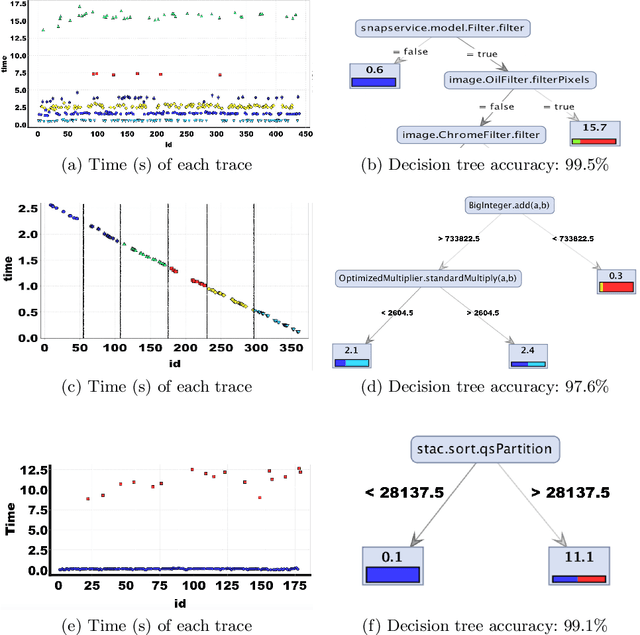Discriminating Traces with Time
Paper and Code
Feb 23, 2017


What properties about the internals of a program explain the possible differences in its overall running time for different inputs? In this paper, we propose a formal framework for considering this question we dub trace-set discrimination. We show that even though the algorithmic problem of computing maximum likelihood discriminants is NP-hard, approaches based on integer linear programming (ILP) and decision tree learning can be useful in zeroing-in on the program internals. On a set of Java benchmarks, we find that compactly-represented decision trees scalably discriminate with high accuracy---more scalably than maximum likelihood discriminants and with comparable accuracy. We demonstrate on three larger case studies how decision-tree discriminants produced by our tool are useful for debugging timing side-channel vulnerabilities (i.e., where a malicious observer infers secrets simply from passively watching execution times) and availability vulnerabilities.
 Add to Chrome
Add to Chrome Add to Firefox
Add to Firefox Add to Edge
Add to Edge